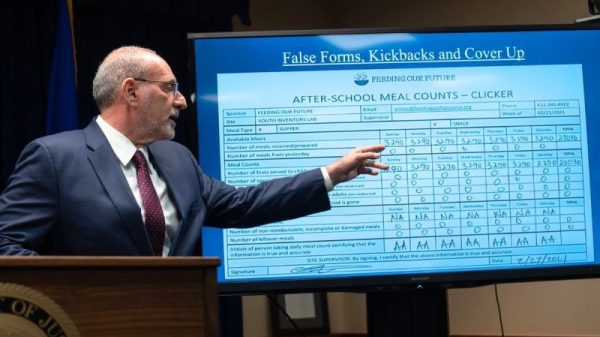Despite extraordinary monetary tightening by the Federal Reserve, inflation remains elevated above its 2 percent target. Even more worrying, inflation accelerated during the first quarter. The Consumer Price Index (CPI) rose at an annualized rate of 4.5 percent over the last three months. The figures for Personal Consumption Expenditures Price Index (PCEPI) are similar through February, with March data set to release later this month. It looked like we had inflation whipped as recently as December. Now it looks like price stability is slipping away.
Many commentators (including myself) were worried monetary policy had become too restrictive as inflation eased. Others worry the Fed is missing the signs of an inflation resurgence, just as they misdiagnosed inflation beginning in 2021 as “transitory.” Clearly there is room for reasonable disagreement. But there’s still a puzzle here: by conventional measures, money looks tight. It’s not clear what needs to happen next to get disinflation back on track.
One way to ascertain the stance of monetary policy is to compare the Fed’s (inflation-adjusted) policy rate to the natural rate of interest. The latter is the hypothetical rate consistent with short-term capital prices accurately reflecting supply and demand conditions. If real market rates are above the natural rate, capital prices are “too high” and money is probably tight.
The fed funds rate range is currently 5.25 – 5.50 percent. Recall that the real fed funds rate is equal to the nominal fed funds rate minus expected inlation. Using the most recent month’s core CPI inflation rate (4.3 percent) as a proxy for expected inflation, the real fed funds rate is estimated at 0.95 to 1.20 percent. While we cannot directly observe the natural rate, we can get various estimates of it from economic models. For example, the New York Fed puts the natural rate of interest between 0.73 and 1.12 percent in 2023:Q4, with both measures trending down. The real fed funds rate range is at or above the natural rate of interest range, suggesting tight money.
Of course, estimates of the natural rate can be wrong. We’ll never know whether the figures the models spit out reflect economic fundamentals. The best we can do is recalibrate models when we get new data. But that’s like driving the car while looking out the rearview window. The picture of road curvature is more helpful than driving totally blind. Yet it’s hardly ideal for knowing how to adjust your steering.
Another way to estimate the stance of monetary policy is to look at the money supply. M2, the most common measure, is shrinking at 1.66 percent per year. It’s highly unusual for the money supply to decrease outright. That said, it is shrinking more slowly than in previous months. Broader monetary aggregates, which weight components based on liquidity, mostly tell the same story: outright shrinkage, albeit at a slower rate. One of the figures (Divisia M4, inclusive of Treasuries) is now growing at 0.70 percent per year. This is hardly a picture of loose money.
Interest rates suggest money is tight. The money supply suggests money is tight. Yet inflation accelerates. What’s going on?
The final factor we should consider is money demand. If this is falling fast enough — if households and businesses are economizing on cash by purchasing goods, services, and financial assets — then even a declining money supply can be inflationary.
Statistics tell us the velocity of M2, which is defined as the ratio of nominal income to the money supply, has increased more than 9 percent from a year ago. Velocity is often used as a proxy for money demand. If velocity is rising, households and firms are spending money at faster rates. Hence money demand is falling.
But this is not as helpful as it seems. The velocity figures come from an accounting identity, which is true by construction. Measured velocity just is nominal GDP divided by M2. We need economic theory to help us understand what’s going on here in terms of causality and mechanisms.
Interestingly, there is a theoretical link between higher interest rates and lower money demand. Interest can be thought of as the opportunity cost of holding liquid assets. Cash, checking accounts, and savings accounts have very low (and sometimes zero) nominal yields. Rising interest rates increase the spread between holding competitive-yielding assets and money. At the margin, we should see portfolio reallocation away from cash to other assets, as well as real goods and services.
Ultimately, we’ll need more than three months of macroeconomic data to discover what’s going on. It’s still possible 2024:Q1 was a bump on the road to disinflation. But while I wish that were so, I increasingly worry it’s not. Market inflation expectations have increased by 32 basis points since the start of 2024. Traders with skin in the game think we’re headed in the wrong direction. That should give us pause.




































